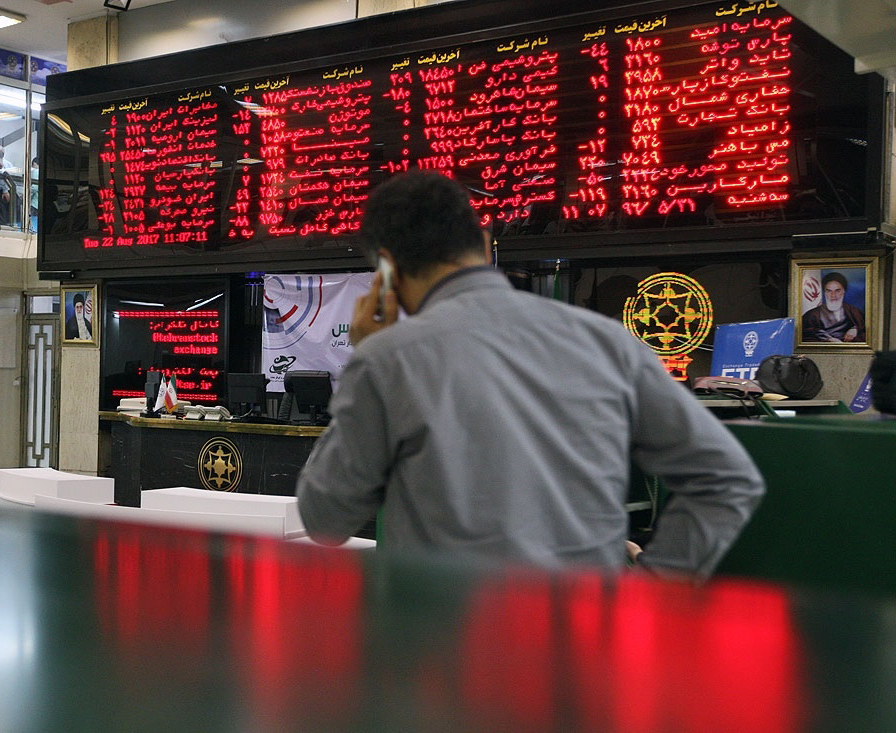Stocks had a relatively quiet week, as the forex market stole much of the spotlight as well as a large chunk of investors’ liquidity.
The US dollar market seems more attractive for the time, yet analysts believe the rial’s devaluation is bound to boost stocks in the long run.
Tehran Stock Exchange’s main index TEDPIX gained 598.6 points or 0.6% during the week that ended on Jan. 24 to extend its all-time high to 99,522.1. The benchmark’s progress is significantly slower compared to the week before last’s 2.8% jump.
However, the main index of the smaller over-the-counter exchange Iran Fara Bourse shed 2.7 points or 0.2% during the week to stand at 1,090.3.
Investors Opt to Wait and See
The currency market’s bull run so far this year was largely expected to lose steam by mid-January, as the season of strong demand for the dollar came to an end.
Moreover, with the OPEC crude prices surging beyond $65 per barrel, analysts believed that the Central Bank of Iran would be able to control market fluctuations through currency injection.
The last few weeks’ forex market developments, however, shook both assumptions, as forex rates’ growth only slowed down by the end of last week and CBI started pumping hard currency into the market, Donya-e-Eqtesad reported.
On Wednesday, the rial was quoted at 45,720 to the dollar in the open market, slightly down from Tuesday’s close and below the psychological threshold of 46,000, according to Tehran Gold and Jewelry Union’s website.
The rial had dropped to around 46,500 against the dollar in the open market on Monday from about 45,750 on Sunday and 37,700 in mid-2017.
The rial’s rout had come as a surprise, considering the pledges of President Hassan Rouhani’s administration to keep it strong and stable against other currencies.
Investors are cautious about betting on rial’s depreciation in the long run, as petrochemical companies traditionally pour their forex earnings into the market by the end of the current fiscal year (March 20) and reverse the rial’s losses.
Iran’s central bank chief on Monday warned investors speculating on the fall of the rial that they were heading for losses because his bank could control the foreign exchange market and the currency was likely to rebound in the next couple of months.
”Those who are investing their resources in foreign exchange will suffer losses in the end,” Seif was quoted as saying, adding that rising oil prices had given Iran more resources to support its currency.
Stocks’ current lethargy is mostly due to investors’ wait-and-see mode, considering that the capital market always takes its cues from the forex rates with a bit of lag. The rial’s continued drop and its eventual stabilization will help boost all exporting companies’ stocks on TSE and IFB.
Weekly Trade in Detail
Over 7.26 billion shares valued at $477.46 million were traded on TSE during last week. The number of traded shares and trade value grew by 41% and 68.3% respectively compared to the previous week.
Trading at Iran’s stock markets starts on Saturday and ends on Wednesday.
TSE’s First Market Index gained 94.5 points or 0.13% to end at 70,804.6. The Second Market Index rose by 3,014 points or 1.44% to close at 211345.
And at IFB, with a 17% share of weekly trade, chemical shares were the market leaders, followed by financial institutions with 16% and base metals with 12%.
Over 1.94 billion securities valued at $260.6 million were traded at the over-the-counter exchange. The number of traded shares and trade value dropped by 4% and 37% respectively compared to the previous week.
IFB’s market cap gained $249 million or 0.9% to reach $28.02 billion.
Its First Market witnessed the trading of 236 million securities valued at $9.4 million, indicating a 26% and 31% drop in the number of traded securities and trade value respectively.
About 415 million securities valued at $33.91 million were traded in the Second Market, with the number of traded securities shrinking by 14% and trade value rising 5% week-on-week respectively.
Over 7 million debt securities valued at $156.9 million were also traded at IFB, growing 50% and 51% in the number of bonds traded and value respectively.
Exchange-traded funds also grew 10% in trade number and 16% in value to reach 61 million worth $15.23 million.
Housing mortgage rights’ trade also recorded growth, with the trading of 400,000 securities worth $6.13 million, up 9% and 8% respectively.
Euro 1st, Stocks Last in Weekly Gains
Similar to the week before last, euro topped growth on a weekly basis. USD, gold and TSE followed respectively.
Euro also ranked first in growth so far this fiscal year (March 2017-18), which was followed by TSE, gold, IFB and USD.
TEDPIX has posted a 28.8% growth so far this year, while the figure stands at 24.5% for IFB.
The rial was quoted at 57,350 against euro by Thursday’s close. It marked a 2.92% growth for the European currency and the week’s highest ROI.
Euro’s growth so far this year also reached 39.46%, having started the year at 41,120.
US dollar, on the other hand, gained 1.70% against the rial this week to 45,330. Its growth so far this year reached 20.94%, having started the year at 37,480.
As for gold, Bahar Azadi gold coin also rose 0.95% last week to 14.74 million rials. Its total growth so far this year stood at 25.8%.


